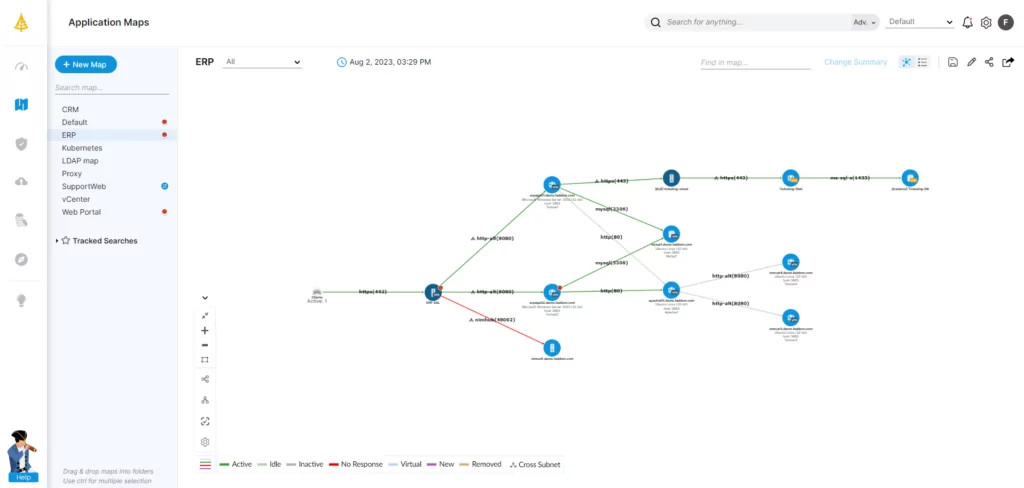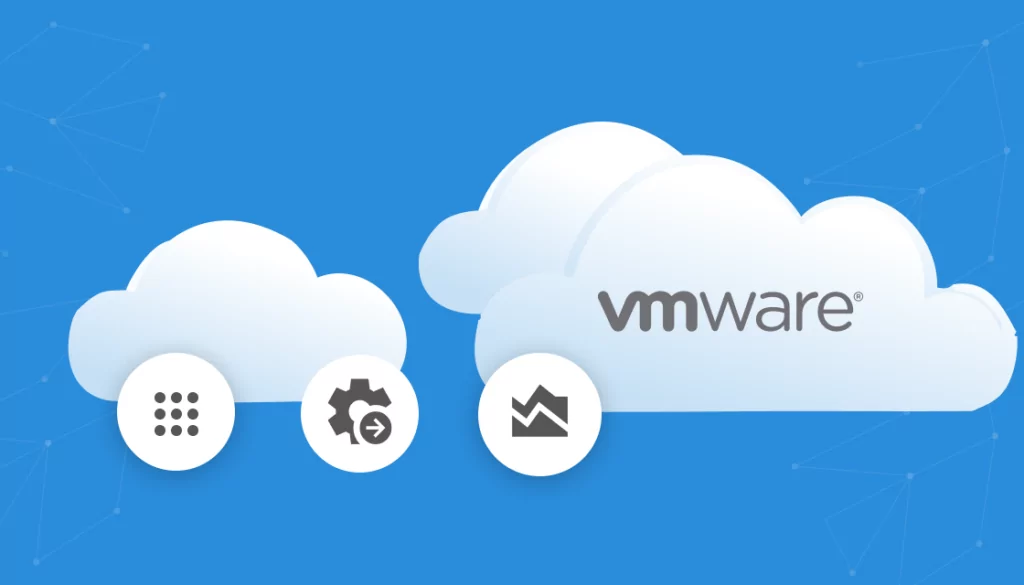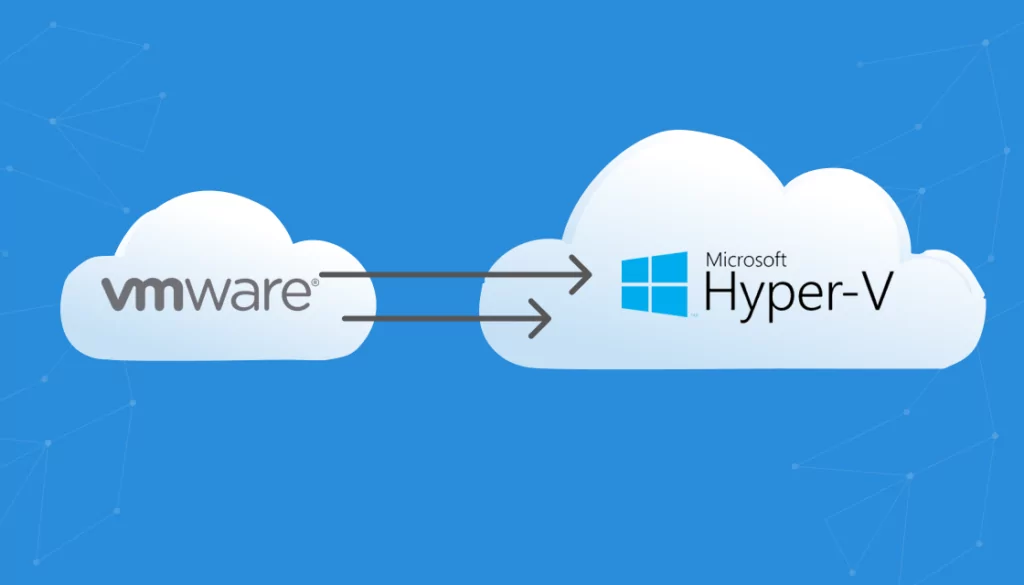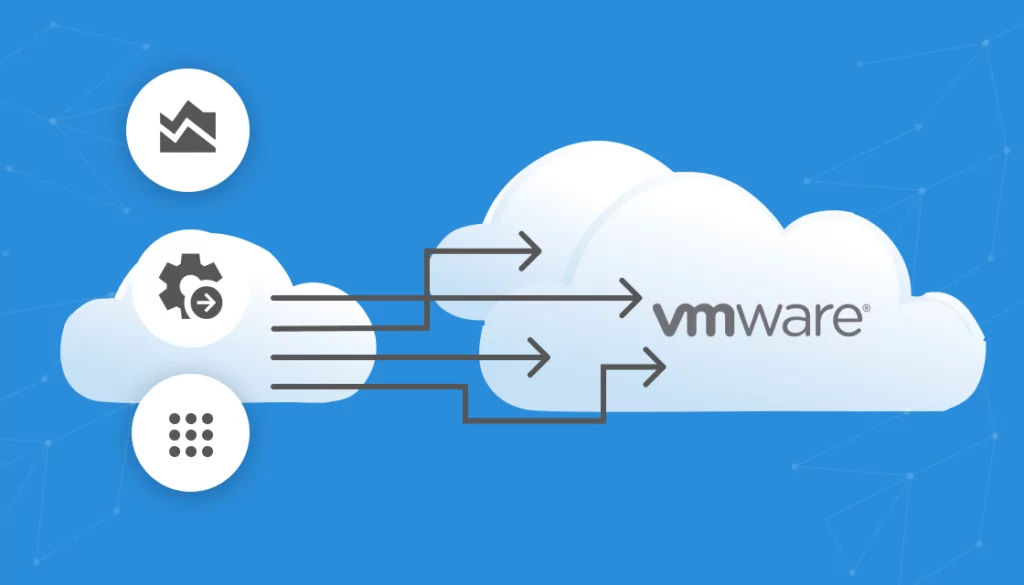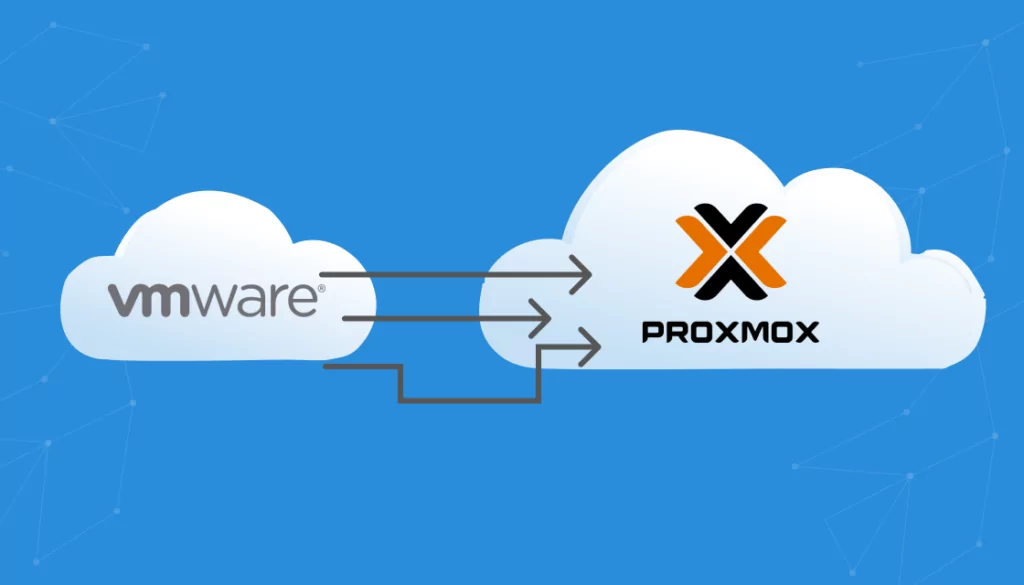Virtualization, hyperconverged infrastructure (HCI), and virtual machines (VMs) across hybrid cloud environments have become ubiquitous alongside containers and microservices. Enterprises embrace virtualization to benefit from the improved resource utilization, flexibility and scalability, simplified resource management, and lower CAPEX it offers, among other reasons.
As the two most dominant platforms in the hybrid cloud virtualization space, organizations often use VMware and Nutanix in parallel. At the same time, however, HCI platform enterprise users are constantly migrating between the platforms.
There are numerous motivations for migrating from VMware to Nutanix, based on the company’s goals and needs. These include the platform’s simplified, single-pane-of-glass resource management and ease of scalability through the Nutanix HCI. Nutanix also offers enhanced performance via resource and management integration, license portability, and greater flexibility in supporting a wide range of workloads—such as virtualized applications, databases, and containers.
This blog explores the steps required to migrate from VMware to Nutanix and the critical role IT infrastructure and application mapping play in this process.
Table of Contents
ToggleMigration Planning and Execution Process
Planning and executing a migration from VMware to Nutanix is complex and highly tailored to each individual enterprise’s needs. But the overall process can be broken down into its common elements across all migration scenarios to understand how ADM plays a vital role.
1. Assess the Current VMware Environment
This assessment process starts with identifying hardware, software compute, and storage configurations along with the applications, workloads, and dependencies running on the VMware environment. This discovery and mapping stage is critical to the pre-migration assessment of the current VMware environment.
There are more than a dozen tools, such as RVTools and other third-party management tools, that provide fairly comprehensive reporting on cluster configuration, networking, storage, and snapshots. It’s ideal to have a fully comprehensive hybrid application dependency and IT mapping software to work across every on-premises and cloud environment while being compatible with VMware and RVTools.
Having the most comprehensive and consistently updated view of the VMware environment before and during the migration process enables more accurate resource planning for the new environment to ensure optimum post-migration performance and risk identification and management. This sets the stage for the next step in the migration process, which is choosing the right Nutanix platform.
2. Choose the Right Nutanix Platform Components
Agility, simplicity through automation, resiliency, security, and licensing portability are among the primary motivations for many VMware to Nutanix migrations. But choosing the right Nutanix Cloud Platform components is essential for a successful move. This choice will depend on each business’s goals and cloud architecture needs.
The Nutanix Cloud Platform has many options for enterprises looking to build out software-defined hybrid and multi-cloud environments that simplify data management across VM-based applications. The platform integrates compute, storage, and networking resources into a single system to efficiently manage virtual workloads.
The Nutanix Cloud Platform includes Nutanix Cloud Infrastructure (NCI), Nutanix Cloud Clusters (NC2), and Nutanix Cloud Manager (NCM).
There are many corresponding Nutanix and VMware products for specific migration pathways and needs. For this blog, the focus is on mapping VMware products to Nutanix Cloud Platform using Nutanix Acropolis Hypervisor (AHV), the Nutanix-native hypervisor virtualization solution. AHV eliminates the need for separate virtualization software. This becomes an example of a migration path that shows the importance of VMWare application and IT environment mapping for migration to a Nutanix environment.
Nutanix integrates AHV with Nutanix Cloud Platform to enable easy, reliable, and secure deployment/management of both virtual and physical infrastructure. By selecting NCM to manage migrated VMware workloads, organizations can see how it provides unified management of Nutanix AHV, ESXi (VMware’s bare metal hypervisor), and vSphere (VMware’s virtualization product suite that includes ESXi and vCenter management software).
Nutanix’s Xi Leap is a cloud-based disaster recovery as a service (DRaaS) solution. The combination of AHV and Xi Leap provides a hybrid cloud solution enabling organizations to seamlessly move workloads between their on-premises infrastructure and the public cloud.
3. Plan the Nutanix Environment
The first step in planning the Nutanix environment is to assess business goals and needs. The organization must determine what applications, workloads, and availability the Nutanix environment will need to support.
The performance, capacity, and scalability requirements are also important. To determine these, the migration team must look at the number of users, expected workload, and expected growth over time. They will also need to consider performance requirements for the storage and network components. All of this can be obtained via accurate mapping of the VMware environment applications, workloads, and dependencies.
Defining the budget and timeline for the Nutanix environment will include determining hardware, software, licensing, and maintenance costs based on mapping of the VMware environment and the development of the corresponding Nutanix environment.
Related Content: Discover more about VMware vs. Nutanix
4. Selecting Hardware and Software
The right hardware and software for the Nutanix environment depend on the team’s performance, capacity, and scalability requirements, along with other factors such as the number of nodes, CPU and memory configuration, and storage capacity.
An organization’s choice will also be based on the hypervisor used, with primary choices including Nutanix AHV, VMware vSphere, and Microsoft Hyper-V. These options all have their own pros and cons depending on the business’s needs.
5. Designing the Nutanix Architecture
There are countless potential Nutanix architecture design variables, but every migration process will focus on simplicity, stability, and scalability. Simplicity can be achieved by abstracting complexity out of IT systems and architectures, which is often cited as a reason for many VMware to Nutanix migrations.
Stability enables the organization to have a solid foundation for everything from the development of new services and products to improved operational efficiencies, business continuity, and recovery. Scalability gives the organization the ability to adapt to all end users, applications, and data without affecting performance while still allowing growth at scale.

Lanir specializes in founding new tech companies for Enterprise Software: Assemble and nurture a great team, Early stage funding to growth late stage, One design partner to hundreds of enterprise customers, MVP to Enterprise grade product, Low level kernel engineering to AI/ML and BigData, One advisory board to a long list of shareholders and board members of the worlds largest VCs
Tips from the Expert
In my experience, here are tips that can help you better manage a migration from VMware to Nutanix:
-
Evaluate Licensing and Costs for Long-Term Savings
Before migrating, analyze the total cost of ownership (TCO) for Nutanix, factoring in licensing, scalability benefits, and operational efficiencies. Ensure the cost benefits outweigh the migration effort.
-
Leverage Automation for Repetitive Tasks
Use Nutanix Calm or similar tools to automate provisioning, updates, and scaling for applications post-migration. This not only reduces manual effort but also ensures consistency in operations.
-
Plan for Hybrid Workload Optimization
If you intend to maintain workloads across both on-premises and cloud environments, ensure your design leverages Nutanix’s hybrid features, such as NC2, for seamless workload mobility.
-
Ensure Skill Development for Nutanix-Specific Tools
Invest in training your IT team on Nutanix Prism, AHV, and networking best practices to avoid bottlenecks during migration and ongoing management.
-
Integrate Disaster Recovery Early
Build disaster recovery into the Nutanix design from the start using tools like Xi Leap or a third-party solution. Testing DR capabilities before decommissioning VMware will reduce risks.
6. Configuring, Deployment, and Installation
This step will be based on the design developed by the migration team. The requirements of the Nutanix environment, the hypervisor, and the cloud platform will determine how the hardware is validated and are all a part of continuous configuration management.
Installing Nutanix requires setting up the Nutanix VMs/clusters and configuring the hypervisor. The basic concept is that each node joining a Nutanix cluster requires a hypervisor, and the Nutanix Acropolis Operating System (AOS) comes with (AHV) built into it. This is required for joining nodes to a Nutanix cluster.
Configuring the network for a Nutanix environment will involve setting up the IP addresses, subnets, VLANs, and other networking components. This will require an understanding of the basics of VMware networking and how IT system mapping plays a part. Nutanix also has a guide to AHV networking with some valuable best practices.
7. Migration
When it comes to VM migration, organizations have several methods to choose from. These include implementing Nutanix Move, manually moving VMs, or using third-party tools. Move is a VM appliance that is hosted on the target AHV cluster for quickly and easily transferring VMs from ESXi, Hyper-V, and public cloud environments (including AWS) to Nutanix AHV.
8. Testing
The new Nutanix environment will require a range of tests. For example, storage tests use installed VMs with operating systems to ensure optimum storage performance. Network tests involve pinging other nodes, transferring files, and testing bandwidth. And compute testing ensures that CPU, memory, and other resources are performing as expected.
Meanwhile, functional, load, and other tests determine if the applications are running correctly and can handle the expected workload. Organizations must also run security tests on firewalls, intrusion detection systems, and other security components. For DR testing, Nutanix has its own Nutanix Disaster Recovery solutions.
9. Monitoring and Management
Managing and monitoring a Nutanix environment is all about identifying, diagnosing, and prioritizing potential problems. On top of optimizing performance, organizations need to ensure security and compliance. A variety of monitoring tools and software, such as Nutanix Prism or third-party solutions, are available for this.
Nutanix Prism is the centralized management solution for Nutanix environments. Prism Element can configure, manage, and monitor Nutanix clusters running any hypervisors. Nutanix Prism Central allows you to deploy in a VM or in a scale/out cluster of VMs (Prism Central Instance), enabling management of different clusters across a distributed environment from a single pane of glass. The Prism Pro feature set lives in Prism Central and delivers advanced analytics for Nutanix environment management.
10. Decommissioning and Documentation
After testing, the migration team can decommission the VMware environment by shutting down all virtual machines, hosts, and storage devices and removing all related hardware and software. IT environment, application, and dependency mapping software can support this process. Teams can determine if the hardware can be repurposed for other uses or disposed of via local regulations.
It’s important to next update the documentation to reflect the changes made during the migration and decommissioning process. Security checks will ensure that the team has removed all data from the VMware environment and that there are no security risks associated with the decommissioned hardware.
How Application Dependency Mapping Supports a Smooth Migration
Identifying the relationships and dependencies between various applications and their underlying infrastructure components via application dependency mapping is an essential part of the VMware to Nutanix migration process.
It’s crucial to understand how each application’s dependencies interact with the infrastructure—from the initial environment assessment phase to the testing phase and management. Nutanix uses a unique architecture and virtualization technology, so it’s important to ensure that the migration process from VMware does not disrupt critical applications or services.
Meet Faddom
Faddom creates a comprehensive map of all applications and their dependencies, including virtual machines, network connections, storage, and other resources. This can help organizations discover any potential issues or bottlenecks and take steps to mitigate them before initiating a migration. Faddom is also compatible with VMware migration, monitoring, and management tools, making migration even smoother.
Application dependency mapping can help organizations optimize their infrastructure by identifying opportunities to consolidate or reconfigure resources, reduce complexity, and improve performance. This can lead to a more efficient and cost-effective migration process, as well as a more streamlined infrastructure.
To learn more about how Faddom’s hybrid application dependency mapping tool makes all aspects of data center and cloud migration projects easier, faster, and more comprehensive, start a free trial today by filling out the form in the sidebar!
